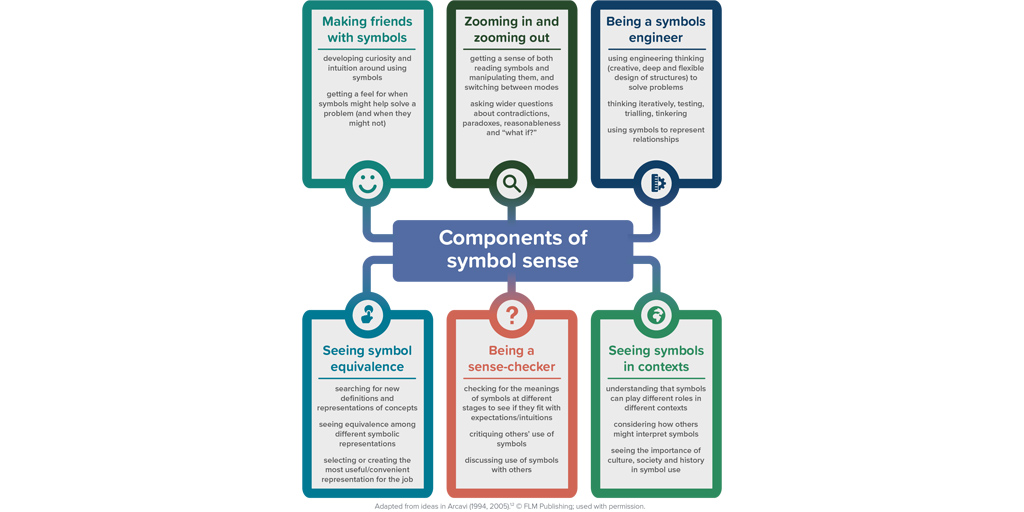06 October 2022

What does research suggest about the development of symbol sense?
- Symbols are tools or referents to help create meaning and express relationships; for example, numerals, arithmetic operators, and the equal sign, as well as pictorial representations, icons and gestures
- Symbol sense (sometimes called structure sense) refers to using symbols with understanding, including when to use symbols and choosing usefully between them as part of a process of meaning-making
- Using symbol sense is foundational to the development of early algebraic thinking, in particular moving from a local focus to a global, more whole-centred viewpoint
- Symbol sense may be supported by students exploring the purpose and consequences of creating their own representations or graphics from an early age
- Carefully chosen ICT tools can help support the development of symbol sense, as can an attitude of patience towards incomplete understanding and uncertainty
- Exploring quantity in terms of equivalence and balancing nested structures such as mobiles may also support symbol sense development
- Successful manipulation of symbolic expressions does not necessarily imply symbol sense; classroom culture should prioritise conceptual as well as procedural understanding in order to develop symbol sense
View Espresso